This page is dedicated to the work of the Los Padres Forest Watch organization (and others). More info. at www.lpfw.org.
 Piedra Blanca Trail ProjectMay 8 – 12, 2024 Piedra Blanca Trail ProjectMay 8 – 12, 2024 Sunset on Piedra Blanca, Nick D.Hello Friends,LPFA and our wonderful volunteers have spent A LOT of time in the San Rafael Wilderness this season. No complaints here, it’s been incredible out there. But for our next project, we’re mixing it up and heading to the Sespe….Join us at Piedra Blanca Camp ~ May 8 – 12 as we head back to the Sespe Wilderness for the second time this season! LPFA spent 5 days on the Piedra Blanca Trail in May 2023, knocking out 3.2 miles of maintenance from the trailhead to Twin Forks Camp. We’re excited to get back out there and keep working up toward Pine Mountain Lodge! Here’s what you need to know:LPFA will provide tools and some cold beverages for the trip.You’ll need to backpack in your own personal gear and food the 3.9 miles from the Piedra Blanca Trailhead to Piedra Blanca Camp. It’s a short and awesome hike across Sespe Creek and over the Piedra Blanca Formation.While we’d love people to come out for all 5 days, you are more than welcome to come for shorter stints too. Sign up and we’ll work out the details from there.Be sure to bring a bathing suit! There are awesome swimming holes near camp to cool off in at the end of the day.To sign up, please click the link below or email us at VOLUNTEER@LPForest.org with any questions.Thanks everyone, hope to see you out there…..Piedra Blanca!? SIGN ME UP!!! Sunset on Piedra Blanca, Nick D.Hello Friends,LPFA and our wonderful volunteers have spent A LOT of time in the San Rafael Wilderness this season. No complaints here, it’s been incredible out there. But for our next project, we’re mixing it up and heading to the Sespe….Join us at Piedra Blanca Camp ~ May 8 – 12 as we head back to the Sespe Wilderness for the second time this season! LPFA spent 5 days on the Piedra Blanca Trail in May 2023, knocking out 3.2 miles of maintenance from the trailhead to Twin Forks Camp. We’re excited to get back out there and keep working up toward Pine Mountain Lodge! Here’s what you need to know:LPFA will provide tools and some cold beverages for the trip.You’ll need to backpack in your own personal gear and food the 3.9 miles from the Piedra Blanca Trailhead to Piedra Blanca Camp. It’s a short and awesome hike across Sespe Creek and over the Piedra Blanca Formation.While we’d love people to come out for all 5 days, you are more than welcome to come for shorter stints too. Sign up and we’ll work out the details from there.Be sure to bring a bathing suit! There are awesome swimming holes near camp to cool off in at the end of the day.To sign up, please click the link below or email us at VOLUNTEER@LPForest.org with any questions.Thanks everyone, hope to see you out there…..Piedra Blanca!? SIGN ME UP!!!  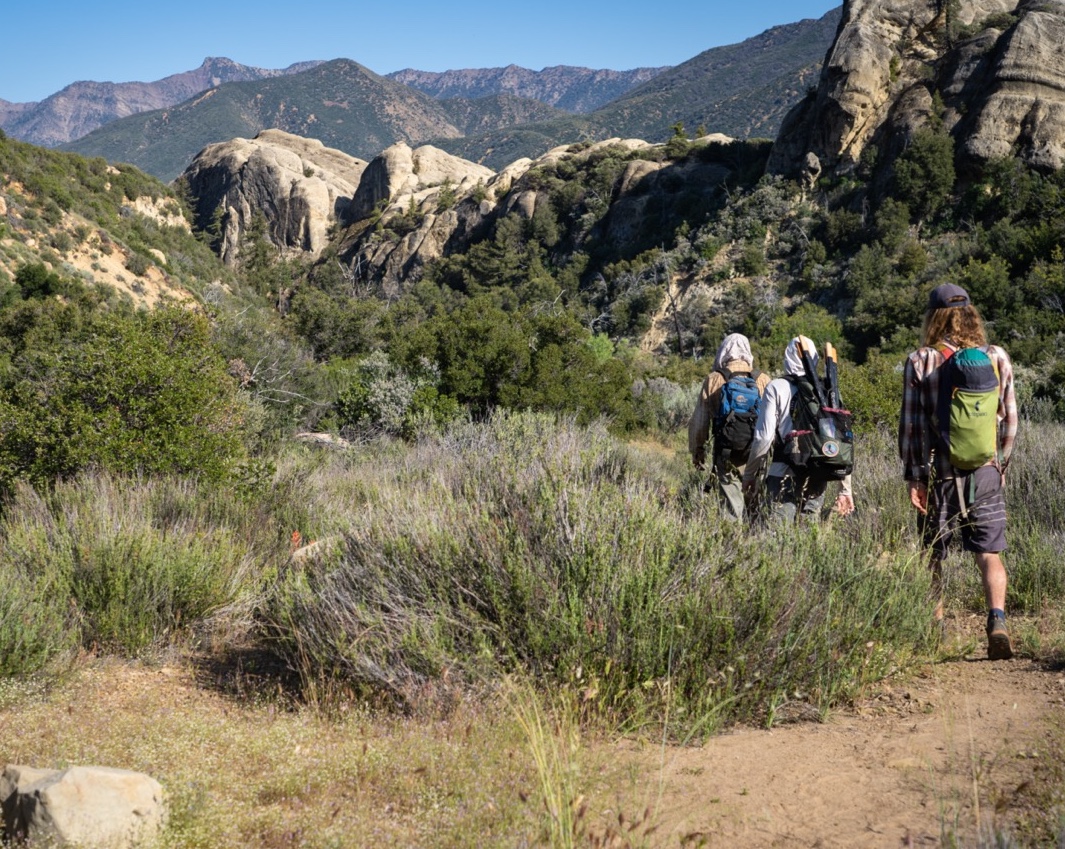  From top left: Area Map, Piedra Blanca Return, Dorsey C., Piedra Blanca Creek, Clancy T. From top left: Area Map, Piedra Blanca Return, Dorsey C., Piedra Blanca Creek, Clancy T. |
| Los Padres Forest Association PO Box 1282 | Goleta, California 93116 805-405-8628 | info@lpforest.org |
Agencies Cancel Plans to Frack Wells, Build Pipelines in Los Padres National Forest
by ForestWatch on APRIL 15, 2024 in CLIMATE CHANGE, FRACKING, OIL DEVELOPMENT, VENTURA COUNTY
VENTURA COUNTY, Calif.— Two federal agencies have confirmed the cancellation of applications for permits to drill and frack eight new wells on federal public land in Los Padres National Forest. The announcement, made April 3, comes just weeks after California officials proposed a statewide ban on this extremely dangerous fossil fuel extraction technique.
Together, the two actions signal the end of the toxic era of fracking in the Sespe Oil Field. Fracking has occurred here for decades unbeknownst to the public, but when ForestWatch uncovered the polluting practice through a series of Freedom of Information Act requests in 2012, a pause in fracking occurred amidst public opposition, regulatory changes requiring increased transparency, and an outpouring of scientific studies showing the dangers posed to human health and the environment.
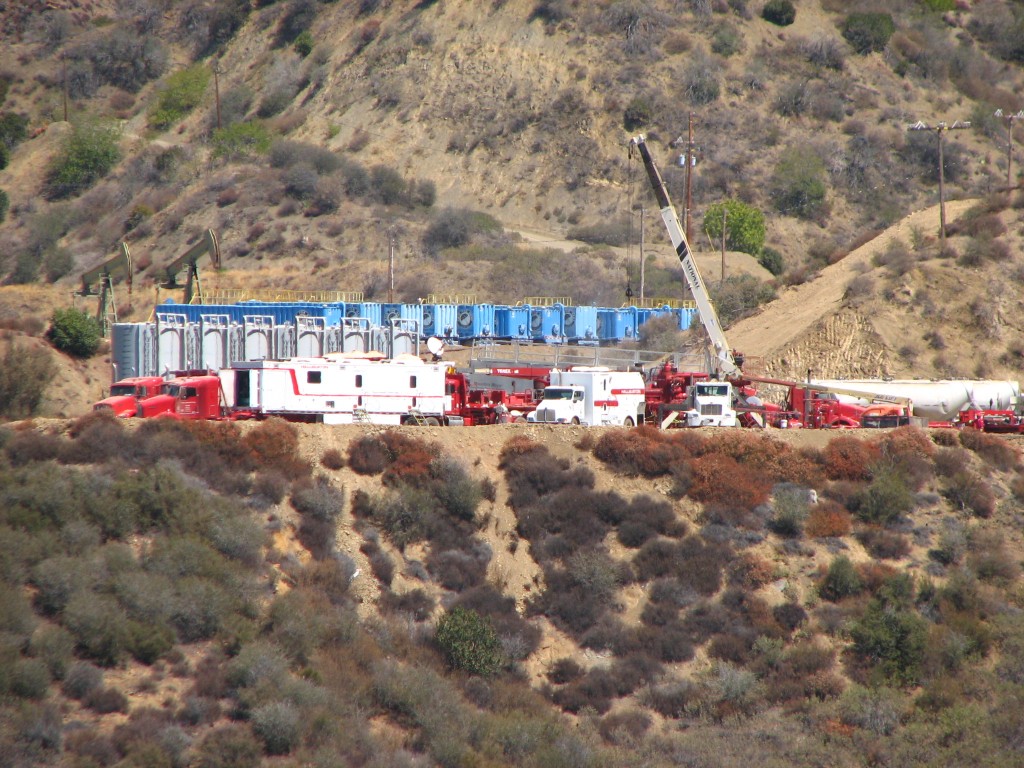
The eight applications—submitted a decade ago, but never approved—refocused the spotlight on the Sespe and the public health and environmental risks posed by fracking.
“This announcement closes the chapter on a toxic and dangerous legacy of fracking in the Sespe,” said Jeff Kuyper, executive director of Los Padres ForestWatch, one of the organizations that mobilized residents to oppose the fracking plan. “While fossil fuel extraction here continues to pose grave dangers to our public lands, communities and climate, today we celebrate this important step forward as we continue the transition to clean energy.”
“I’m relieved that these long-pending drilling and fracking applications have been cancelled, averting a major threat to condors and steelhead,” said Lisa Belenky, senior counsel at the Center for Biological Diversity. “Condors have suffered from oil wells and pipelines in this area in the past and steelhead critical habitat in Sespe Creek is downstream from the oil field, so this is a win for biodiversity. We can’t allow expansion of fracking and other oil and gas extraction on our public lands. Ending fossil fuel production is critical to reducing greenhouse gas pollution and supporting real climate solutions.”
Seneca Resources — a Texas-based oil company — filed the original drilling applications with the Bureau of Land Management in 2013, seeking permission to frack eight new wells in the Sespe Creek watershed along with the construction of nearly two miles of new pipelines, a 12,600-gallon tank, and other industrial facilities in this remote area upstream of the town of Fillmore. Carbon California, a Colorado-based company, eventually took over operation of the Sespe Oil Field.
From the beginning, the plan faced widespread opposition, but the U.S. Forest Service anticipated that the wells would be approved within months and joined with the BLM to prepare an Environmental Assessment. An EA is a concise, less-detailed analysis often reserved for projects without significant environmental impacts. Thousands of local residents submitted letters and signed petitions urging the agencies to prepare a more detailed Environmental Impact Statement or to reject the wells outright.
Hydraulic fracturing — commonly known as “fracking” — is a process whereby water, sand and thousands of gallons of chemical additives are injected underground to break apart rock formations and stimulate the extraction of oil and gas. The technique has come under increasing scrutiny from scientists, regulators and the public due to concerns about groundwater contamination, surface water pollution, water consumption and public health. Hundreds of fracking chemicals are known to be toxic to humans and wildlife, and several are known to cause cancer.

Located approximately four miles north of Fillmore in Ventura County, the Sespe Oil Field is one of the oldest oil fields in California. The lands in and around the oil field provide important habitat for endangered California condors. That includes the Sespe Condor Sanctuary, the Hopper Mountain National Wildlife Refuge, and the Sespe Wilderness. The headwaters of several mountain streams originate in the Sespe Oil Field before emptying into Sespe Creek, which is formally designated critical habitat for endangered southern steelhead and is classified as an “Area of High Ecological Significance” by the U.S. Forest Service.
“The protection of this sensitive environment from the dangers of fracking is a step in the right direction. The residents of Fillmore rely on the Sespe Creek watershed to recharge their groundwater supply, and it is now receiving the protection it deserves,” said Haley Ehlers, executive director at Climate First: Replacing Oil & Gas (CFROG). “Agencies must continue the progress by protecting our public lands and communities from all types of extreme oil extraction.”
Statewide Fracking Ban Nears
California has not approved a fracking permit since 2021. That same year, Gov. Newsom announced a plan to stop issuing fracking permits within three years and phase out fossil fuel extraction by 2045. In tune with the governor’s plan, California oil regulators earlier this year unveiled their official proposal to permanently ban fracking throughout the state.
The proposed regulatory text reads: “The [California Geologic Energy Management] Division, including the supervisor and district deputies, will not approve applications for permits to conduct well stimulation treatments.” The regulatory change is expected to be finalized in the coming months. “Most of the fracking in the Sespe Oil Field occurred decades ago when the American public was still unaware that such a practice even existed,” said Alasdair Coyne, conservation director of Keep Sespe Wild. “It’s good to see that our state regulators are now acting to protect our water supplies from the toxic pollution that is an ever-present risk with fracking operations.”
Ventura Land Trust Acquires Mariano Ranch from the Ventura Botanical Gardens to 2 Trees
July 8, 2022
Ventura, CA – Ventura Land Trust has been awarded $7.2 million from the State of California to complete the acquisition and permanent conservation of the 1,645-acre Ventura hillsides property now known as Mariano Rancho Preserve.
Mariano Rancho Preserve provides a dramatic backdrop to historic downtown and midtown Ventura with the most high-profile hills in the region. The eastern edge of Mariano Rancho Preserve contains one of the famous “Two Trees.” The western corner of the property is adjacent to Ventura’s Grant Park, home to the Ventura Botanical Gardens.

With the acquisition of Mariano Rancho Preserve, Ventura Land Trust comes full circle to the reason the organization, originally Ventura Hillsides Conservancy, was established in 2003: to preserve and protect the hills that define Ventura’s landscape.
Ecological restoration of Mariano Rancho Preserve will support the recovery of the endangered coastal sage scrub plant community and safeguard a corridor of open space critical for wildlife movement and survival in the region. The scenic property is part of a county-designated wildlife corridor that connects the Ventura River watershed to the Santa Clara River watershed.
For Ventura Land Trust Executive Director Melissa Baffa, this funding is a game changer for land conservation in for Ventura Land Trust and for Ventura County.
“We are deeply honored by the State’s support of our work to conserve open space in the Ventura hillsides,” says Baffa. “The preservation and restoration of this land will be a tremendous gift to the wildlife that depend on these habitats. It is thrilling to make this kind of multi-generational impact on a region, and Ventura Land Trust is grateful for the partnership of the State of California and our local legislators in these efforts.”
California State Assemblymember Steve Bennett was the primary advocate for directing state funds to Ventura Land Trust for land acquisition, stewardship, and infrastructure for public preserve access.
“The State of California’s investment in the acquisition efforts of Ventura Land Trust will give residents enormous outside recreational value for many generations,” says Bennett. “I’m proud to partner with them and Senator [Monique] Limón in securing these funds.”
Although county residents should celebrate the preservation of this open space, Baffa cautions that Mariano Rancho Preserve is not yet open to the public.
“The southern property boundary is adjacent to residential neighborhoods with narrow streets. There is no public parking available for access to the preserve from those neighborhoods. Additional visitors and traffic could prevent residents and emergency vehicles from moving freely and safely through the streets.”
The message (until further notice) is clear; ‘DO NOT ATTEMPT TO ACCESS THIS LAND’. Ventura does have a history of legal action taken by land owners who have had their properties trespassed upon by people attempting to access public hiking trails. Unauthorized access (to the new trail system) could result in arrest or personal harm to trespassers. Make sure you visit the V.L.T. website for updates and instructions as to the legal ways (and legal hours) to access this trail system. And by no means should any visitors ever litter or allow their pets to leave their feces along the hiking trails (editor).
Ventura Land Trust will engage in a multi-year planning process before opening Mariano Rancho Preserve to the public. The planning process will address the long-term conservation and stewardship of the land. Translation – this amazing acquisition of local wild lands will be inaccessible for many years, except to members of the Ventura Land Trust (who can take as long as they’d like to conduct their ‘planning process’ – editor).
In the coming months, Ventura Land Trust will commission a conceptual trail plan for the property. The trail network will offer preserve access to hikers and cyclists, while minimizing the impact on plant and animal habitats. A trailhead parking lot will be constructed to accommodate visitors.
A series of community meetings will be scheduled for late summer and fall 2022. Each meeting will focus on an element of Ventura Land Trust’s planning for the preserve, with topics on public access, conservation and land restoration, and trails and recreation. The public is invited to attend. Meeting dates, times, and locations will be posted on Ventura Land Trust’s website http://www.venturalandtrust.org
Coastal Conservancy Celebrates Groundbreaking of the Wallis Annenberg Wildlife Crossing at Liberty Canyon
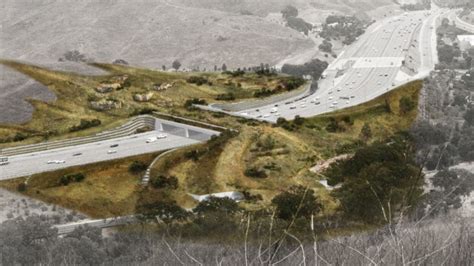
Today, the State Coastal Conservancy joined Governor Newsom, the National Wildlife Federation, and partners to celebrate the start of construction on the Wallis Annenberg Wildlife Crossing at Liberty Canyon in Agoura Hills.
Spanning over ten lanes of the 101 freeway in the Agoura Hills area when complete, the crossing will be the largest in the world, the first of its kind in California, and a global model for urban wildlife conservation. It will restore safe wildlife travel along a corridor between the inland Sierra Madre Mountains and the coastal Santa Monica Mountains.
Roads and development are deadly for animals trying to cross and have created islands of habitat that can genetically isolate wildlife, from bobcats to birds and lizards. This visionary wildlife crossing will preserve biodiversity across the region by re-connecting an integral wildlife corridor, and most critically, help save a threatened local population of mountain lions from extinction.
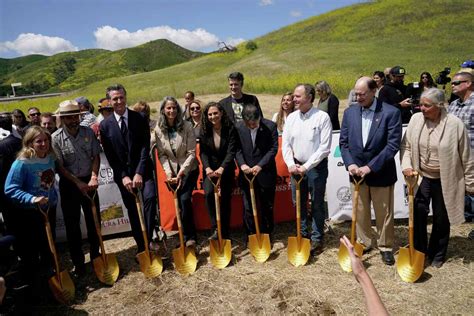
“Southern California is one of 25 hotspots of biological diversity on Earth but many coastal habitats in this region have been severed from inland landscapes. Restoring connectivity across US-101 will provide southern California’s plant and animal life the essential habitat it needs for survival.” Said Amy Hutzel, Executive Officer of the Coastal Conservancy, “The Coastal Conservancy has been a staunch supporter of this project for many years, having funded the environmental assessment and design of the crossing in 2015, so we are thrilled to break ground on this project that will have a huge positive impact on regional biodiversity and means so much to the people of the LA area.”
Court Upholds Ventura County Wildlife Corridor Protections
By ForestWatch on February 9, 2022 in Ventura County, Wildlife Protection
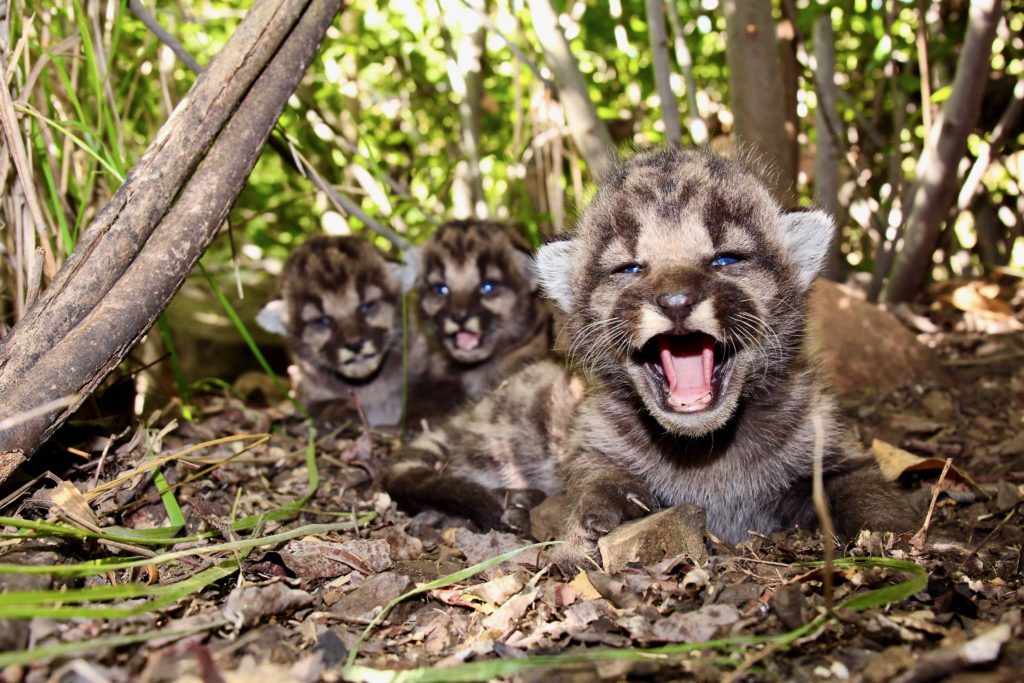
A pair of Ventura County ordinances that increases protections for wildlife corridors has prevailed after a judge ruled on the side of county leaders and conservationists.
The tentative rulings, expected to be finalized next week, uphold Ordinance No. 4537 and Ordinance No. 4539, which were approved by the board of supervisors in 2019. The ordinances designate standards for development and require environmental reviews for projects that may hinder wildlife connectivity. They are the first ordinances of their kind in California.
“Protecting pathways for wildlife is critical for their survival,” said Jeff Kuyper, executive director of Los Padres ForestWatch. “We’re hopeful that these science-based measures will remain in place and serve as a model to protect mountain lions, bears, deer, and other iconic wildlife throughout the state.”
Ventura County Superior Court Judge Mark S. Borrell issued the ruling in response to a legal challenge to the ordinances by the Ventura County Coalition of Labor, Agriculture and Business, and the California Construction and Industrial Materials Association. Four conservation groups intervened to defend the ordinances.
“Communities across California should take a look at what Ventura County has done to protect wildlife hemmed in by overdevelopment,” said J.P. Rose, a senior attorney at the Center for Biological Diversity. “These ordinances have stood up to legal challenges, and they’ll go a long way toward fighting the extinction crisis.”
The ordinances help protect the wildlife corridors that connect the Los Padres National Forest, Santa Monica Mountains and Simi Hills. Habitat connectivity is crucial for the survival of mountain lions, gray foxes, California red-legged frogs and other wildlife in the region.
“This decision, if finalized, will be a victory for Ventura County and the diverse wildlife that need room to roam there,” said Pamela Flick, California program director for Defenders of Wildlife. “We commend the county for its bold leadership to ensure that wildlife can better move about on the landscape and call on local governments throughout California to maintain habitat connectivity when considering future development.”
In Southern California, mountain lions have struggled with diminishing and fragmented habitat. The California Fish and Game Commission is considering permanent protections of Southern California and Central Coast mountain lions under the state’s Endangered Species Act. A vote is expected later this year.
“This decision is a critical win for conservation, and the hope that numerous threatened and endangered species will continue to grace our landscapes for generations to come,” said Dennis Arguelles, Los Angeles program manager forNational Parks Conservation Association. “From the Los Padres National Forest to the Santa Monica Mountains, local wildlife has a fighting chance thanks to the innovation and leadership of Ventura County.”
Los Padres ForestWatch, the Center for Biological Diversity, Defenders of Wildlife and the National Parks Conservation Association intervened to defend the ordinances. The groups were represented by the Environmental Law Clinic at the University of California, Irvine School of Law.
About ForestWatch
View all posts by ForestWatch → ← Ventura City Council Votes 6-0 to Officially Oppose Logging Projects on Pine Mountain and Mt. PinosShort Film by ForestWatch and The Sea League Selected for Santa Barbara International Film Festival →
Breaking News
The Coast & River Report would like to formally thank the Ventura City Council for it’s vote to protect our local watershed from further destruction by means of logging on Pine Mtn., and to our local climate in terms of increased truck traffic on Hwy 33.
This story is reprinted from the Forest Watch website (www.forestwatch.org).
Ventura City Council Votes 6-0 to Officially Oppose Logging Projects on Pine Mountain
By ForestWatch on February 8, 2022 in Logging & Vegetation Clearing, Los Padres National Forest, Mt. Pinos Area, Pine Mountain, Ventura County
Ventura, CA — The Ventura City Council voted 6-0 last night to formally oppose two commercial logging projects on Pine Mountain and Mt. Pinos in the Los Padres National Forest. The vote comes on the heels of similar votes by the Ojai City Council and Ventura County Board of Supervisors and just days after a federal appeals court struck down a third logging project.
“Logging and chaparral removal are expected to degrade these forests and outdoor recreation for decades, harm wildlife and cultural resources, increase flammability and vulnerability to wildfire, and contribute to climate change,” wrote City of Ventura Mayor Sofia Rubalcava and City Councilmember Doug Halter in their request to the City Council to take a formal position.
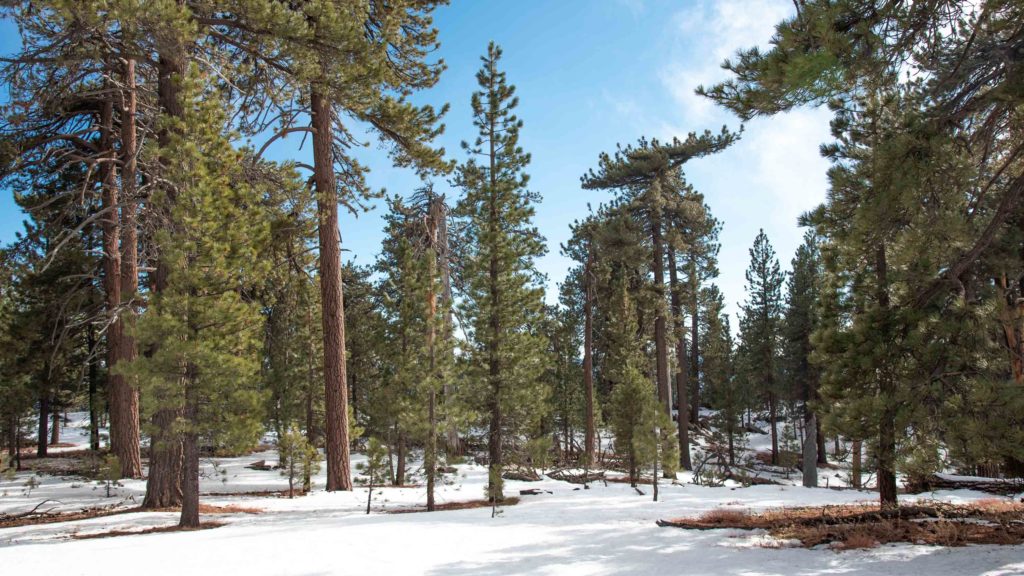
The City Council’s action adds to massive public opposition to the Forest Service’s plans to cut trees and clear chaparral across 755 acres on Pine Mountain and over 1,600 acres atop Mt. Pinos. Nearly 20,000 residents from throughout the region have spoken out against one or both of the projects. The City of Ventura joins hundreds of organizations, businesses, tribal leaders, scientists, members of Congress, and local governments that have made their opposition known to the Forest Service.
“We applaud the City of Ventura for its resounding opposition to these contentious and damaging logging projects,” said Los Padres ForestWatch conservation director Bryant Baker. “They join a growing chorus of local governments throughout the region calling for better protections for our forests, our wildlife, our communities & our climate.”
In similar votes, a 4-1 majority of the Ventura County Board of Supervisors voiced their opposition to the logging projects in October 2021. The City of Ojai followed suit shortly thereafter with a 5-0 vote in formal opposition to the logging projects.
“We appreciate the City Council’s vote last night,” said J.J. Huggins, spokesman for Patagonia. “That fact that the Ventura City Council, the Ventura County Board of Supervisors and the Ojai City Council are all officially opposing these logging projects sends a strong signal from our community to the Forest Service. Pine Mountain and Mount Pinos are natural playgrounds that provide amazing recreational opportunities to the public, and we need to protect them.”
The Pine Mountain project approval was issued in September of last year using a loophole that allows the Forest Service to bypass normal requirements to prepare an environmental assessment. Instead, officials only prepared a series of “specialist reports” that were not made available to the public until the decision was made and did not evaluate any alternatives or mitigation measures that would reduce or avoid damage caused by the project. The loophole also allows the agency to move forward without offering any formal public objection or appeal opportunity to address concerns. The proposal on Mt. Pinos along the Northern Ventura County line (with Kern county) is expected to be approved using similar methods.
Both projects would allow the use of heavy equipment to log live and dead trees up to two feet in diameter and clear chaparral. Trees larger than two feet in diameter may also be removed under vague stipulations. A commercial timber sale would be allowed as part of the logging activities according to the Forest Service.
Only an hour and a half drive from Ventura, Pine Mountain is a popular destination for campers, hikers, climbers, and other recreationists. The ridge is also home to some of the most diverse and unique habitats in the region. The forests and chaparral on Pine Mountain support more than 400 species of native plants as well as mountain lions, black bears, bobcats, mule deer, and numerous birds and small mammals. A recent study commissioned by Los Padres ForestWatch found multiple California spotted owls—one of the rarest owl species in California—near the project area.
Mt. Pinos is the tallest peak in the Los Padres National Forest, and it is of major spiritual and cultural importance to local Indigenous peoples. Residents from across Ventura County flock to Mt. Pinos each winter to experience yearly snow and high elevation activities that cannot be found elsewhere nearby.
Patagonia and other business owners in the city attended last night’s hearing, urging the councilmembers to vote to oppose the logging projects in the Los Padres National Forest.
“Thank you to the Ventura City Council and Mayor Rubalcava for taking the next steps to ensure protection for this important natural environment that is so close to home,” said Michelle Stevens, Founder of The Refill Shoppe in Ventura who spoke at the hearing. “Generations of Ventura County humans, animals, bugs and ecosystem will be forever grateful.”
“Thanks to Mayor Rubalcava and Ventura City Council for helping to ensure that the critical natural environment surrounding Pine Mountain is preserved for outdoor enthusiasts both young and old,” said Topa Topa Brewing Company founder Jack Dyer. “This important ecosystem in our backyard is a treasure worth preserving.”
“These mountain areas are the crown jewels of our backcountry,” said Lewis Engineering owner Jane Lewis Montague. “To allow destruction from heavy equipment, cutting roads, cutting carbon-sequestering trees, interruption of the wildlife corridors and fouling the delicate biological ecosystem within the natural habitat is completely contrary to our own interests as local residents and frankly, as humans. I applaud the vision of our Mayor Sofia Rubalcava, Councilmember Doug Halter, and other city council members in standing up for these forests and the city residents who want to see them protected.”
The Forest Service has stated that both projects are intended for wildfire risk reduction despite numerous scientific studies that have shown remote vegetation removal projects to be ineffective in mitigating wildfires that cause the majority of fire-related damage to communities each year. Scientists and conservation organizations have long advocated that funding should instead be directed to creating defensible space directly next to homes, retrofitting and building structures with fire-safe materials, and reducing development in the wildland-urban interface. Areas where native trees and shrubs are removed with heavy equipment are also prone to being infested with non-native invasive plants that can increase wildfire risk.
Over one-third of the Pine Mountain project area is within two proposed additions to the Sespe Wilderness as part of the Central Coast Heritage Protection Act approved by the U.S. House of Representatives last year. The legislation would designate an area along part of the western portion of the ridge and an area that includes Reyes Peak.
The Pine Mountain decision is the third logging project to be approved in the Los Padres National Forest since 2018. The Ninth Circuit Court of Appeals recently issued a ruling vacating the Forest Service’s approval of commercial logging across nearly 70% of one of these project areas near the Ventura-Kern county line.